| This article may be confusing or unclear to readers. Please help clarify the article. There might be a discussion about this on the talk page. (July 2020) (Learn how and when to remove this message) |
Japanese Castles in Korea (Korean: 왜성; Hanja: 倭城; RR: Waeseong; Japanese: 倭城, romanized: Wajō, Wesōn) are Japanese castles built along the southern shores of Korea during Japanese invasions of Korea between 1592 and 1598 by the Japanese military.
Japanese castles in Korea can be classified into two categories: castles that were built to secure supply lines for Japanese forces moving throughout Korea, and castles that were built mainly along the southern coast of Korea to act as seats of governing power.
The first category of castles were built between Busan and Seoul at intervals roughly equal to the distance an army could march in one day. The castle network was later expanded northward to Uiju. These castles were established by either reinforcing existing settlements, or were built anew if no suitable settlements existed in the area where a castle was needed. Although the locations are currently unknown, Japanese castles are also believed to have been built between Kilju and Anbyŏn in the historical Hamgyong Province.
The second category of castles built along the southern coast of Korea were located in Busan, Ulsan, South Gyeongsang Province, Suncheon, South Jeolla Province).
Japanese castles are thought to have been built not only on the southern coast of the Korean Peninsula but also in the inland areas, but the reality is unknown. Thirty-two areas on the southern coast have already been investigated.
Research
Na Dong-wook, head of the Cultural Heritage Research Team at the Busan Museum, summarized the research results of the Japanese Fortress built during the Imjin War and the Jeongyu War.
Team leader Na introduced the fact that Ulsan Japanese Fortress, which was built by 16,000 Japanese soldiers for 40 days in 1597, was a highly defensive castle, pointing out that about 30 Japanese Fortresses in Korea are being damaged by development and environmental changes.
"The Japanese Fortress is an important cultural asset in reconstructing the East Asian War and recreating history that was fierce more than 400 years ago," he stressed.
The academic symposium, co-hosted by the National Museum of Korea and sponsored by KEB Hana Bank and the Korean Culture and Arts Committee, was organized in conjunction with the special exhibition "Jeong Yu-jae-ran," which runs until the 22nd. There will also be presentations on strengthening negotiations, the outbreak of the oil crisis, the direction of understanding of the Battle of Noryang, and the Battle of Yukinaga and Suncheon Castle in Konishi.
"We look forward to an in-depth discussion on the oil refinery disaster through this symposium," said an official at the Jinju National Museum. "It will be a place to take a detailed look at the lives and lives of the Korean, Chinese and Japanese people as well as the reality of the war."
The purpose of oil refining is to conquer the southern part of the Korean Peninsula... all Koreans are arrested.
Cultural Heritage Protection Act
- Cultural Heritage
The Japanese Fortress is protected by the Cultural Heritage Protection Act, just like the Korean castle. It is preserved by the Cultural Heritage Administration of Korea under the Cultural Heritage Protection Act.
- Historically and culturally, Japanese Fortress must be preserved and can be designated as natural reserves and environmental reserves. Talks that Japan's remnants should be eliminated could violate the Cultural Heritage Protection Act.
The Japanese Fortress should be preserved as the site of its history, and excavation surveys related to the Uiseong site (Gupo Japanese Fortress, Jeungsan-ri Fortress in Yangsan) are also needed, he said. (History's Black Box 'Japanese Fortress Rediscovery')
As a cultural asset, much attention is needed historically, and efforts are needed to manage and preserve the Japanese Fortress at the management level so that it is not lost.
"Definition of Article 2 of the Cultural Heritage Protection Act.
- The Japanese Fortress is recalled under the Cultural Heritage Protection Act as it applies the same protection law as the Korean castle.
- Specifies that property damage may be legally punished for burning, destroying, damaging or destroying a Japanese Fortress without consultation for no reason.
Other
In 2019, a map of Japanese castle locations, called "Joseon Japanese Illustration," was discovered and became a topic of conversation
- Dadaeposeong Fortress, which was rebuilt during the Japanese Invasion of Korea in 1592, did not become a Japanese fortress like Busanjinseong Fortress or Jaseong Fortress, and Dadaeposeong Fortress was excluded from the Japanese Fortress.
- Jisepojinseong said that the Japanese army led by Kato Kiyomasa lost the battle during the Japanese Invasion of Korea, but the Jiseopseong Fortress was later renamed Jiseposeong Fortress, but was excluded from the Japanese Fortress.
- The Jinju Mangjin Waeseong Fortress was built during the reign of Jeongyujae-ran War and is currently a lost Waeseong Fortress in Bakmungu. There is no wooden fence near the beacon, and the estimated wall at the top was the 5th Gyeongsang Mangjin Mountain Beacon Station
- The Jinju Mangjin Japanese Fortress was located in Mangjin Mountain, Juyak-dong, Jinju-si, Gyeongsangnam-do. Meanwhile, it is estimated that the 5th Gyeongsang Mangjin Mountain Beacon Station, located 240 meters from the top, was used by the Japanese military during the Japanese Invasion of Korea.
- On September 21, 1598, the Mangjin Japanese Fortress in the Namgang River was burnt down and disappeared.
On the other hand, the Yeongchun Japanese Fortress and Gonyang Japanese Fortress, which are not recorded in the records, were occupied by the forces of Shimazu Yoshihiro in the Battle of Sacheonseong Fortress.
- The next day, on September 22, 1598, Gonyang Waeseong was burned to the ground.
The missing Japanese fortresses were identified as seven sites (Jungang-dong, Dongsam-dong (Busan), Hopo (Yangsan), Gyeonnae-ryang (Geoje), Mangjin, Yeongchun (Jinju), Gonyang (Sacheon), and Dongnae (Busan) will soon be destroyed if they are not managed by the National, Government, Public Office, and Community Center.
Language edition documents
List of Japanese castles in Korea
Shows a list of Japanese castles (approximately from north to north).
Japanese Invasion of Korea (1592 ~ 1598)
- In April 1592 shortly after the start of the Japanese invasions of Korea, the Japanese army that landed in Busan built a castle there to establish a supply base. In November of the same year, the Konishi army that occupied Pyongyang built the castle there, and Ukiota built the castle in Namsan. In January of the following year, the Japanese army built about 20 Waseongs on the coast of South Gyeongsang Province today from May 1593.
| Number | Photo | Revised Romanization | Hangul Hanja |
Birth | Congregation | defense | Location | Administrator (organization) |
medical history | Comments |
|---|---|---|---|---|---|---|---|---|---|---|
| 1 | 
|
Nulcha Waeseong | 눌차왜성 (訥次倭城) |
1592s | Sixth Army (毛利輝元) Commander of the Sixth Army (小早川隆景) |
Commander of the Sixth Army (小早川隆景) Sixth Army (毛利秀包) (立花宗茂) (島津忠恒) Japanese army (日本軍) |
Mountain 84-7 Nulcha-dong Gangseo District, Busan Busan Republic of Korea |
Gangseo District (Busan) |
가덕도왜성 | |
| 2 | 
|
가덕도 왜성지성 (加德島倭城支城) |
1593s | Fourth Army (高橋元種) Sixth Army (筑紫広門) (立花宗茂) (毛利秀包) (立花直次) |
Mountain 43 Seongbuk-dong Gangseo District, Busan Busan Republic of Korea |
Gangseo District (Busan) |
성북왜성 | |||
| 3 | 
|
Seongbuk Waeseong | 가덕도 성북왜성 (加德島城北倭城) |
1593s | Commander of the Sixth Army (小早川隆景) |
Commander-in-Chief of the Left Army (小早川秀包) Taziba Touko (立花統虎) |
Mountain 43, 53, 52. Seongbuk-dong Gangseo District, Busan Busan Republic of Korea |
Gangseo District (Busan) |
See also Siege of Busan | |
| 4 | 
|
Waeseong in Jukseong-ri, Gijang | 기장 죽성리왜성 (機張 竹城里倭城, Japanese: 機張城) |
1593s | Commander of the 3rd Army (黒田長政) (黒田孝高) |
Second Army Commander (加藤清正) |
601 Jukseong-ri Gijang-eup Gijang-gun Busan Republic of Korea |
Gijang-gun | 33,000 people |
죽성리왜성, 豆毛浦倭城 (2002년 발굴) 부산광역시 기념물 제48호, 기장성-일본 |
| 5 | 
|
Gimhae Jukdo Japanese Castle | 김해 죽도왜성 (金海 竹島倭城) |
1593s | Second Army (鍋島直茂) (鍋島勝茂) |
Second Army (鍋島直茂) |
787 of Member Jukrim-dong Gangseo District, Busan Busan Republic of Korea |
Gangseo District, Busan | 가락성, 죽도성, 김해왜성(2004년 발굴) 부산광역시 기념물 제47호 | |
| 6 | 
|
Gupo Japanese Fortress | 구포왜성 (亀浦倭城, Japanese: カードカイ城) |
1593s | The first Commander of the Sixth Army (小早川隆景) Sixth Army (筑紫 広門) (立花宗茂) (立花直次) Secondary Friendship Commander (毛利秀元) |
Secondary Commander of the 3rd Army (黒田 長政) |
Mountain 93 Deokcheon 1-dong Buk District, Busan Busan Republic of Korea |
Buk District (Busan) |
5,000 people |
감동포성, 의성 (2002, 2004년 발굴) 부산광역시 기념물 6호 카도카이성-일본 九法谷의 陳. 죽도왜성의 지성 |
| 7 | 
|
Nongso Waeseong | 김해 농소왜성지 (金海 農所倭城址) |
1593s | Second Army (鍋島直茂) |
Mountain 22-5 Nongso-ri Juchon-myeon Gimhae Gyeongsangnam-do Republic of Korea |
Nongso Village Hall (농소마을회관) |
5,000 people |
신답지성 (2001년 발굴), 죽도왜성의 지성 2001년(경남문화재연구원) | |
| 8 | 
|
Masa Waeseong | 마사왜성지 (馬沙倭城址) |
1593s | Second Army (鍋島直茂) |
Mountain 61-2 Geumgok-ri Hallim-myeon Gimhae Gyeongsangnam-do Republic of Korea |
Gimhae | 5,000 people |
土城, 죽도왜성의 지성 | |
| 9 | 
|
Dongnae Waeseong | 동래왜성(동래읍성지) (東萊倭城) |
1593s | lord (吉川広家) |
First Army Commander (小西行長) |
1-9 Chilsan-dong Dongnae-gu Busan Republic of Korea |
Dongnae-gu | ||

|
Sixth Army (毛利輝元) |
Yeongdo District Busan Republic of Korea |
추목도왜성, 영도왜성 | |||||||
| 11 | 
|
Busanjinseong | 부산진성 (釜山鎭城, Japanese: まるやまじょう) |
1593s | Sixth Army (毛利輝元) Friendship Commander (毛利 秀元) conducting asceticism (浅野長政) |
Sixth Army (毛利輝元) |
(Beomil-dong) Jaseong-ro 99 Dong District, Busan Busan Republic of Korea |
Dong District (Busan) |
18,700 people |
소서성, 환산성, 부산왜성의 지성 |
| 12 | 
|
Seosaengpo Japanese Fortress | 서생포왜성 (西生浦倭城) |
1593s | Second Army Commander (加藤清正) |
Commander of the 3rd Army (黒田長政) |
711 Seosaeng-ri Seosaeng-myeon Ulju-gun Ulsan Republic of Korea |
Ulju-gun | 100,000 people |
烽火城(2012년 발굴) |
| 13 | 
|
Imnangpo Japanese Fortress | 임랑포왜성 (林浪浦倭城, Japanese: せいぐわん城) |
1593s | Commander of the Fourth Army (毛利勝信) Fourth Army (島津豊久) (伊東祐兵) (高橋元種) (秋月種長) |
Commander of the Fourth Army (毛利勝信) Fourth Army (島津豊久) (伊東祐兵) (高橋元種) (秋月種長) |
Mountain 48 Imrang-ri Jangan-eup Gijang-gun Busan Republic of Korea |
Gijang-gun | 발굴조사 : 2001년(중앙문화재연구원) 세이관성-일본 | |
| 14 | 
|
Yeongdeungpo Waeseong | 영등왜성지 (永登倭城址) |
1592s | Fourth Army (島津義弘) |
Mountain 6-17 Guyeong-ri Jangmok-myeon Geoje Gyeongsangnam-do Republic of Korea 外城: 34 Guyeong 2-gil Jangmok-myeon |
Geoje | 2,000 people |
영등포왜성, 구영등왜성 | |
| 15 | 
|
Songjinpo Waeseong | 송진포왜성 (松真浦倭城) |
1593s | Commander of the Fifth Army (福島正則) Fifth Army (戸田勝隆) (長宗我部元親) |
Mountain 6-3 Jangmok-ri Jangmok-myeon Geoje Gyeongsangnam-do Republic of Korea |
Geoje | 시루성(甑城) | ||
| 16 | 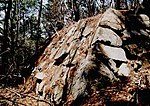
|
Geoje Jangmunpo Castle | 거제 장문포 왜성 (巨濟 長門逋 倭城) |
1594s 11. | Commander of the Fifth Army (福島正則) Fifth Army (蜂須賀家政) (生駒親正) (戸田勝隆) |
Fifth Army (長宗我部元親) (生駒親正) |
130-43 Jangmok-ri Jangmok-myeon Geoje Gyeongsangnam-do Republic of Korea |
Geoje | 장목왜성 경상남도 문화재자료 제273호 | |
| 17 | 
|
Jama Japanese Fortress | 창원 자마산성 (昌原 子馬山城) |
1593s | First Army (宗義智) |
15 Mountain Seongnae-dong Jinhae-gu Changwon Gyeongsangnam-do Republic of Korea |
Changwon | 자마왜성, 웅천왜성의 지성 | ||
| 18 | 
|
Myeongdong Japanese Fortress | 창원 명동왜성 (昌原 明洞倭城) |
1593s | First Army (松浦鎮信) (宗義智) |
13 Mountain Myeong-dong Jinhae-gu Changwon Gyeongsangnam-do Republic of Korea |
Changwon | 웅천왜성의 지성 | ||
| 19 | 
|
Angol Japanese Fortress | 창원 안골왜성 (昌原 安骨倭城) |
1593s | navy (脇坂安治) (加藤嘉明) naval commander (九鬼嘉隆) |
Mountain 27 etc. Angol-dong Jinhae-gu Changwon Gyeongsangnam-do Republic of Korea |
Changwon | 경상남도 문화재자료 제275호 일본 제1수군기지(왜수군 제1기지) (2009년 발굴 동양문물연구원) 웅천 안골왜성(熊川 安骨倭城) | ||
| 20 | 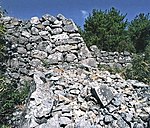
|
Ungcheon Japanese Fortress | 창원 웅천왜성 (昌原 熊川倭城) |
1593s | First Army Commander (小西行長) First Army → (宗義智) Daimyo (上杉景勝) |
211-1 Mountain Nammun-dong Jinhae-gu Changwon Gyeongsangnam-do Republic of Korea |
Changwon | 5,000 people |
경상남도 문화재자료 제79호 일본 제2수군기지(왜수군 제2기지) | |

|
6th Army (毛利輝元) (小西行長) |
Jung District Busan Republic of Korea |
Japanese castles in Busan (Korea) Sengoku Forum '迫門口' | |||||||

|
Hopo Waeseong in Gasan-ri, Yangsan | 양산 가산리 호포왜성지 (梁山 架山里 弧浦倭城址) |
Japanese army (日本軍) |
Yangsan Gyeongsangnam-do Republic of Korea 26 Hopo-ro Dong-myeon Yangsan 1120-6 Gasan-ri Dong-myeon Yangsan (Downstream of Yangsancheon Stream, Downstream of Gyeongbu Line) Gasan-ri Dong-myeon Yangsan 1026-1, 1027–26, 1028-11 |
Hopo Castle Site (弧浦城址) Cultural Heritage Administration, 1977 <General History of Cultural Heritage> |
Japanese Invasion of Korea (1597 ~ 1598)
- The Japanese army, which had been re-invading after the peace negotiations between the Japanese and Keicho broke down, took over the castle that had been built up until now, and the Japanese navy took over the Kumakawa castle and used it as a base. At that time, the Japanese military secured the occupied land and repaired the traditional coastal area to connect with the Japanese mainland, while the line of battle expanded to Ulsan in the east and Suncheon in the west, and the castle was newly built in this area.
- After the collapse of the negotiations on strengthening the Japanese Invasion of Korea in 1592, the Japanese army occupied the Japanese fortress again, and the Japanese navy occupied Ungcheon Japanese Fortress as its base. At that time, the Japanese army secured the occupied area and repaired the existing Japanese fortress along the coast to connect with the Japanese mainland, and the Japanese fortress was newly built in this area as the front line expanded to Ulsan on the east and Suncheon on the west.
| Number | Photo | Revised Romanization | Hangul Hanja |
Birth | Congregation | defense | Location | Administrator (organization) |
medical history | Comments |
|---|---|---|---|---|---|---|---|---|---|---|
| 23 | 
|
Goseong Japanese Fortress | 고성읍성 (固城邑城) |
1597s | lord (吉川広家) (桂元網) |
Second Army (鍋島直茂) |
Seongnae-ri, Seooe-ri, and Sumam-ri Goseong-eup Goseong County, South Gyeongsang Gyeongsangnam-do Republic of Korea Goseong Waseong: 42 Seongnae-ro 136beon-gil. Goseong-eup |
Goseong County | 7,000 people |
수남리왜성, 경상남도 문화재자료 제89호 |

|
First Army (宗義智) Wakizaka Yasuharu Karashima Setoguchi (辛島瀬戸口) |
(柳川調信) |
Sadeung-myeon Geoje Gyeongsangnam-do Republic of Korea |
왜성동왜성, 광리왜성 토성(土城) | ||||||
| 25 | Namhae Castle | 남해 선소왜성 (南海 船所倭城) |
1597s | navy (脇坂安治) First Army (宗義智) |
First Army (宗義智) |
149 Seonso-ro Namhae-eup Namhae County Gyeongsangnam-do Republic of Korea |
Namhae County | 1,000 people |
경남발전연구원 역사문화센터, 2004 『문화유적분포지도-남해군-』. | |
| 26 | 
|
Busan Japanese Fortress | 부산일본성 (釜山日本城) |
1598s | Sixth Army (毛利輝元) First Army Commander (小西行長) |
Commander-in-Chief of the Left Army (小早川秀包) |
Beomil-dong Dong District, Busan Busan Republic of Korea |
Dong District (Busan) |
||
| 27 | 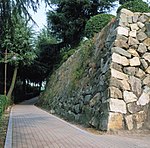
|
Masan Japanese Fortress | 마산일본성 (馬山日本城) |
1597s | Invitation (伊達政宗) Second Army (鍋島直茂) (鍋島勝茂) |
(Sanho-dong) 142 Yongmasan-gil Masanhappo-gu Changwon Gyeongsangnam-do Republic of Korea |
Changwon | 12,000 people |
창원왜성, 용마성 | |
| 28 | 
|
Waeseong in Seonjin-ri, Sacheon | 사천선전리성 (泗川船津里城) |
1597s | Commander of the Fourth Army (毛利勝信) Fourth Army (Left army) (島津義弘) Daimyo (池田景雄) Armed (中川秀成) (立花直次) |
Fourth Army (Left army) (島津義弘) Commander of the Fourth Army (毛利勝信) Seventh Army (毛利輝元) |
770 Seonjin-ri Yonghyeon-myeon Sacheon Gyeongsangnam-do Republic of Korea 1082 Seonjin-ri Yonghyeon-myeon |
Sacheon | 10,000 people |
선진리왜성(2005년 발굴) 경상남도 문화재자료 제274호 See also Battle of Sacheon (1598) |
| 29 | 
|
Suncheon Castle | 순천왜성 (順天倭城) |
1597s | First Army Commander (Left army) (spearhead) (小西行長) General and 7th Army Commander (Commander of the Left Army) (spearhead) (宇喜多秀家) navy (spearhead) (騰堂高虎) |
First Army Commander (Left army) (小西行長) navy (騰堂高虎) |
Mountain 1 beyond Sinseong-ri Haeryong-myeon Suncheon Jeolla Province Republic of Korea |
Suncheon | 13,700 people |
왜교성, 예교성 (2001, 2002, 2004년 발굴) 전라남도 지방기념물 제171호 (1999년 2월 26일 지정) See also Siege of Suncheon |
| 30 | 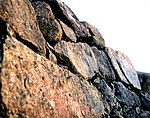
|
Waeseong in Jeungsan-ri, Yangsan | 양산 증산리 왜성 (勿禁 甑山里 倭城) |
1597s | Commander of the 3rd Army (Friendly Army) (黒田長政) Daimyo (伊達政宗) Seventh Army (毛利輝元) Commander-in-Chief of the Left Army (小早川秀包) |
Commander of the 3rd Army (Friendly Army) (黒田長政) (黒田孝高) |
Mountain 15 Jeungsan-ri Mulgeum-eup Yangsan Gyeongsangnam-do Republic of Korea |
Yangsan | 증산리왜성 경상남도 문화재자료 제276호 日帝强占期 朝鮮総督府 宝物古跡名勝天然記念物 昭和14年古跡指定台帳指定 Japanese colonial era Treasure Historic Land Climbing Natural Monument Showa and 14-year Historic Site Designation Ledger) | |
| 31 | 
|
Ulsan Japanese Fortress | 울산왜성 (蔚山倭城) |
1597s 12. | Second Army Commander (Friendly Army) (加藤清正) Eighth Army (construction) (淺野幸長) Friendship Commander (construction) (毛利秀元) Inspector and Supervisor (武士) (太田一吉) head of department Shishido Mototsugu (肉戸元續) (加藤淸兵衛) Katō Yasumasa (加藤安政) Okochi Hidemoto (大河内秀元) |
Second Army Commander (Friendly Army) (加藤清正) |
(Hakseong-dong) 54, Hakseong Park 3-gil Jung District, Ulsan Ulsan Republic of Korea |
Jung District (Ulsan) |
16,000 people |
울산광역시 문화재자료 제7호 (1997년 10월 30일 지정) |
Command Post
- The Japanese army, which landed in Busan shortly after the start of the Japanese invasion of Korea in April 1592, built the fortress to establish a supply base. In November of the same year, Konishi County, which occupied Pyongyang, built a dwarf planet in Pyongyang, while Ukida built a dwarf planet in Namsan, just south of Hanseong. However, the Japanese army, which began to be chased by the Cho-Myong coalition forces in January of the following year, built some 20 dwarfs along the coast of what is now South Gyeongsang Province from May 1593.
- The Japanese army, which had invaded again after the collapse of negotiations to strengthen the Japanese invasion of Korea, occupied the previously built dwarf planet and made the Japanese army its base by occupying the Ungcheon dwarf. At that time, the Japanese military secured the occupied area and repaired the previously built coastal dwarfs for connection with the mainland Japan, while the front was extended to Ulsan on the east and Suncheon on the west.
| Past | one's family | Name | Photo | inauguration | Death | History |
|---|---|---|---|---|---|---|
| Tae-hyup, instead of Tae-jeong (a shrine to various gods) |

|
Toyotomi Hideyoshi (豊臣秀吉) |

|
1555s | 1600s lunar calendar (October 1) | Sengoku Daimyo, the very person, National Three Young Girls (전국 3영걸), Chikuzenokami, the fifth rank of the species (종5위), Left-handed chief, Occupation status (종4위) True (참의) a third-rate class (종3위) Dainagon(大納言), a regular second (정2위) the Lord Keeper of the Privy Seal(內大臣), No. 1 in species (종1위) Gwanbaek (関白), instead of Tae-jeong (태정대신), certificate a regular first (정1위) |
Congregation and defense Commander
| Past | one's family | Name | Photo | inauguration | Death | History |
|---|---|---|---|---|---|---|
| a command (conducting asceticism) | 
|
Asano Nagamasa (浅野長政) |

|
1547s | 1611s May 29 | the fifth rank of the species (종5위), Danjo Shohitsu (弾正少弼) |
| the first generation (First Army Commander) (Left army) |

|
Konishi Yukinaga (小西 行長) |

|
1555s | 1600s lunar calendar(October 1) | Sengoku Armour (센고쿠 무장), Girisitan (기리시탄), Ceremony (세레머니) |
| First Army '1st platoon' | 
|
Sō Yoshitoshi (宗義智) |

|
1568s | 1615s January 31 | Sengoku Armour (센고쿠 무장), Damyo Shrine (다이묘) |
| First Army '2nd platoon' | 
|
Matsura Shigenobu (松浦鎭信) |

|
1549s | 1614s July 3 | Damyo Shrine (다이묘), Occupation status (종4위) |
| the second generation (Second Army Commander) (Friendly Army) |

|
Katō Kiyomasa (加藤清正) |

|
1562s July 25 | 1611s August 2 | Sengoku Armour (센고쿠 무장), Damyo Shrine (다이묘), general of the army (원수) |
| Second Army | 
|
Nabeshima Naoshige (鍋島直茂) |

|
1538s April 12 | 1618s July 24 | Sengoku Armour (센고쿠 무장), a Japanese general (일본 장수), general of the army (원수) |
| Second Army under the banner Armour | 
|
Nabeshima Katsushige (鍋島勝茂) |

|
1580s December 4 | 1657s May 7 | Sengoku Armour (센고쿠 무장), Damyo Shrine (다이묘) |
| the third generation (Commander of the 3rd Army) (Friendly Army) |

|
Kuroda Nagamasa (黒田長政) |

|
1568s December 21 | 1623s August 4 | Sengoku Armour (센고쿠 무장), Damyo Shrine (다이묘), general of the army (원수) |
| the fourth generation (Commander of the Fourth Army) | 
|
Mōri Katsunobu (毛利勝信) |
an unknown birth | 1611s | Sengoku Armour (센고쿠 무장), Damyo Shrine (다이묘), general of the army (원수) | |
| Fourth Army '1st platoon' (Left army) | 
|
Shimazu Yoshihiro (島津義弘) |

|
1535s lunar calendar (July 23) | 1619s lunar calendar (July 21) | Sengoku Armour (센고쿠 무장), Shugo Daimyo (슈고 다이묘), a member of the Japanese military (일본군 소장), general of the army (원수) |
| Fourth Army '2nd platoon' | 
|
Takahashi Mototane (高橋元種) |
1571s | 1614s November 10 | Sengoku Armour (센고쿠 무장), Sengoku Daimyo (센고쿠 다이묘) | |
| Fourth Army '3rd platoon' | 
|
Akizuki Tanenaga (秋月種長) |
1500s the middle | 1600s Early | Armour, Damyo Shrine (다이묘) | |
| Fourth Army '4th platoon' | 
|
Itō Suketaka (伊東祐兵) |

|
1559s February 22 | 1600s November 16 | Sengoku Armour (센고쿠 무장), Damyo Shrine (다이묘) |
| Fourth Army '5th platoon' | 
|
Shimazu Toyohisa (島津豊久) |

|
1570s | 1600s October 21 | Sengoku Armour (센고쿠 무장), Damyo Shrine (다이묘), Nakatsuka-Sanotaihu (中務大輔) |
| the fifth (Commander of the Fifth Army) | 
|
Fukushima Masanori (福島正則) |

|
1561s | 1624s August 26 (lunar calendar Seven 13) | Damyo Shrine (다이묘), a Japanese general (일본 장수), general of the army (원수) |
| Fifth Army '1st platoon' | 
|
Toda Katsutaka (戸田勝隆) |
an unknown birth | 1594s December 4 | Sengoku Armour (센고쿠 무장), Damyo Shrine (다이묘) | |
| Fifth Army '2nd platoon' | 
|
Chōsokabe Motochika (長宗我部元親) |
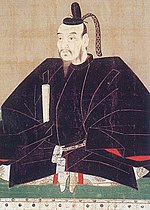
|
1539s | 1599s May 19 | Sengoku Daimyo (센고쿠 다이묘) |
| Fifth Army '3rd platoon' | 
|
Hachisuka Iemasa (蜂須賀家政) |
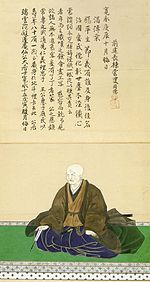
|
1558s | 1639s February 2 | Damyo Shrine (다이묘) |
| Fifth Army '4th platoon' | 
|
Ikoma Chikamasa (生駒親正) |

|
1555s | 1600s lunar calendar (October 1) | Sengoku Armour (센고쿠 무장), Damyo Shrine (다이묘) |
| the sixth generation (Commander of the Sixth Army) (a general ledger - general commander) |

|
Kobayakawa Takakage (小早川隆景) |

|
1533s | 1597s July 26 | a general ledger (총대장), Sengoku Armour (센고쿠 무장), Damyo Shrine (다이묘), general of the army (원수) |
| The 6th Daimyo (Commander-in-Chief of the Left Army) | 
|
Kobayakawa Hideaki (小早川秀秋) |

|
1582s | 1602s | a third-rate class (종3위), Gwonjungnapeon (権中納言), Chikuzen (지쿠젠) |
| Sixth Army '1st platoon' | 
|
Mōri Hidekane (毛利秀包) |
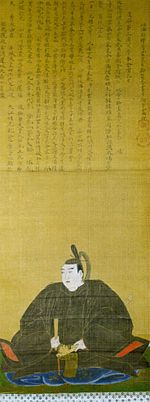
|
1567s | 1601s April 24 | Sengoku Armour (센고쿠 무장), Damyo Shrine (다이묘), general of the army (원수) |
| Sixth Army '2nd platoon' | 
|
Tachibana Muneshige (立花宗茂) |

|
1567s September 20 | 1643s January 15 | Sengoku Armour (센고쿠 무장), Damyo Shrine (다이묘), posthumous promotion (추증), a third-rate class (종3위), Saconoshogen (사콘노쇼겐), Shijong (시종), Hidanokami (히다노카미), general of the army (원수) |
| Sixth Army '3rd platoon' | 
|
Tachibana Naotsugu (立花直次) |
1572s January 4 | 1617s August 20 | Sengoku Armour (센고쿠 무장), Damyo Shrine (다이묘), general of the army (원수) | |
| Sixth Army '4th platoon' | 
|
Tsukushi Hirokado (筑紫広門) |
1556s | 1623s May 22 | Sengoku Armour (센고쿠 무장), Damyo Shrine (다이묘) | |
| Sixth Army '5th platoon' | 
|
Mōri Terumoto (毛利輝元) |

|
1553s February 4 | 1625s June 2 | Sengoku Armour (센고쿠 무장), Damyo Shrine (다이묘), general captain of west (서군 총대장), general of the army (원수) |
| the seventh generation (General and 7th Army Commander) (a general ledger) (Commander of the Left Army) |

|
Ukita Hideie (宇喜多秀家) |
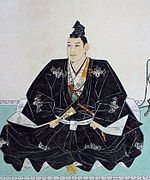
|
1572s | 1655s December 17 | a general ledger (총대장), Sengoku Armour (센고쿠 무장), Damyo Shrine (다이묘), a third-rate class (종3위), a government-grade landlord (관위급 지주) an acid radical (산기), Sakon Aagon Altar (左近衛權中將), junagon (權中納言), general of the army (원수) |
| 8th platoon (Eighth Army) (a command post) |

|
Asano Yoshinaga (淺野幸長) |

|
1576s | 1613s October 9 | Sengoku Armour (센고쿠 무장), Damyo Shrine (다이묘) |
| the ninth (naval commander) | 
|
Kuki Yoshitaka (九鬼嘉隆) |

|
1542s | 1600s November 17 | Sengoku Water Force Armored (센고쿠 수군 무장), Daimyo the Pirate (해적 다이묘), general of the army (원수) |
| First navy | 
|
Wakisaka Yasuharu (脇坂安治) |

|
1554s | 1626s September 26 | Sengoku Armour (센고쿠 무장), Damyo Shrine (다이묘) |
| Second navy | 
|
Katō Yoshiaki (加藤嘉明) |

|
1563s | 1631s October 7 | Sengoku Armour (센고쿠 무장), Damyo Shrine (다이묘) |
| Third navy | 
|
Tōdō Takatora (騰堂高虎) |

|
1556s February 16 | 1630s November 9 | Sengoku Armour (센고쿠 무장), Damyo Shrine (다이묘), general of the army (원수) |
| the tenth generation (Friendship Commander) | 
|
Mōri Hidemoto (毛利秀元) |

|
1579s November 25 (Rain Chuguk Sarukake Castle) |
1650s November 26 (Edo) | Sengoku Armour (센고쿠 무장), Damyo Shrine (다이묘), the third best (정3위), an acid radical (산기), general of the army (원수) |
| the present head (representative) of the family | 
|
Kikkawa Hiroie (吉川広家) |

|
1561s | 1625s | Sengoku Armour (센고쿠 무장), a working position (종4위), Minbu Shouyu (民部少輔), an official landlord (관위부 지주) |
| Damyo Shrine | 
|
Date Masamune (伊達政宗) |

|
1567s September 5 | 1636s June 27 | the fifth rank of the species (종5위), Sakyodaibu (左京大夫), an official landlord (관위부 지주), Echizen-Nokami (에치젠노카미), Occupation status (종4위), Ugonogon Show (右近衛権少将), Mutsunokami (무쓰노카미), the third best (정3위), an acid radical (산기), a third-rate class (종3위), Gwonjungnapeon (権中納言), posthumous promotion (추증), second place of species (종2위), general of the army (원수) |
Gallery
-
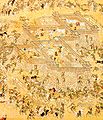 Japanese invasions of Korea (1592–1598) Ulsan Japanese fortress
Japanese invasions of Korea (1592–1598) Ulsan Japanese fortress
-
 Namhae Seonso Japanese fortress
Namhae Seonso Japanese fortress
-
 Ruins of Seosaengpo Japanese Fortress
Ruins of Seosaengpo Japanese Fortress
-
 Ruins of Ulsan Castle
Ruins of Ulsan Castle
-
 Ruins of Suncheon Japanese fortress
Ruins of Suncheon Japanese fortress
See also
References
- japanese castles in korea 1592-98 Checked on August 6, 2020
- ja:倭城
- 왜성
- KNN News Crisis Waeseong, Wants of Development Checked on June, 2016
- "Untitled - 경남발전연구원 역사문화센터" (PDF). Archived from the original (PDF) on 2018-12-22. Retrieved 2020-03-22.
- KNN News: Five Waeseong in Crisis Has Stacked a Reclaim. Checked on June, 2016
- Waeseong in KNN news crisis. Checked on June, 2016
- The library The digital library Korean Studies Library Korean Studies Electronics Library Archived 2020-06-18 at the Wayback Machine
- ^ Local Notice Quote
- 検索結果 -倭城 Checked on November 6, 2020
- 朝鮮半島南岸構築の倭城に見る役割と機能 - Core Checked on November 6, 2020
- Castle in Busan is lonely Check out on September 5, 2020
- Jinju 8th Gyeongsang 5th Gyeongsang Mangjin Mountain Beacon Station There is a on November 25, 2020, a broadcasting tower of the Korea Broadcasting Corporation and Mangjin Sports Park.
- Where 38,000 Cho-Myeong coalition troops were decapitated by Japanese troops Archived 2020-06-22 at the Wayback Machine Checked on November 26, 2020
- ^ Indelible traces of history, Japanese Fortress / YTN Science (Semazu Iehisa and other 500 Japanese troops stationed) Checked on July 11, 2020
- 山崎敏昭, 1998, 「加德城と安骨浦倭城の繩張り」 『倭城の硏究』2, 城郭談話會. 福島克彦, 1998, 「加德城と安骨浦城の構造」 『韓國 慶尙南道 倭城址の調査硏究』, 神戶大學文學部. 한국문물연구원, 2010, 『釜山 訥次洞 817-4番地遺蹟』. 釜山廣域市史編纂委員會, 1999, 『江西區誌』.
- "Pottery War" that captured Joseon potters.This fortress was built by Nagamasa Kuroda and his father Yoshitaka Kuroda, who commanded the Third Army during the early Japanese invasion, mobilized 33,000 people.
- 『增補文獻備考』 豆毛浦城 臨浪浦城 備局謄錄 並有倭城.(두모포성, 임랑포성은 비 국등록에 모두 왜성이라 기록하였다.)
- 『大東地志』 城池 竹島倭城 南十里 宣祖壬辰倭人所築 周五百八十척 外城周六百十五척.(남쪽으로 10리이고 선조 임진년(1592) 왜인이 쌓았다. 둘레는 580척 (약 176m)이고 외성의 둘레는 615척(약 186m)이다.) 『增補文獻備考』 竹島倭城 在南十里 壬辰倭賊石築 邑誌周五百八十척 外城周六百十五척.(죽도왜성은 남쪽으로 10리에 있고 임진년에 왜적이 돌로 쌓았다. 읍지에는 둘레 580척(약 176m), 외성 둘레 615척(약 186m)이라 기록하고 있다.
- 『大東地志』 城池 仇法谷城 狐浦城 二處倭所築.(구법곡성, 호포성 두 곳을 왜인이 쌓았다.) 『增補文獻備考』 仇法谷狐浦 備局謄錄 並有倭城.(구법곡성과 호포성은 비국등록에서 모두 왜성이라 기록하였다.)
- Nongso Waeseong, Historical Black Box, Dwarf - Google Books Checked on July 8, 2019
- 高田徹, 1999, 「金海 竹島倭城の遺構と遺物-繩張り-」 『倭城の硏究』3, 城郭談話會. 高瀨哲郞, 1999, 「倭城蹟を訪ねて」 『硏究紀要』5, 佐賀縣立名護屋城博物館. 경남문화재연구원, 2004, 『김해 농소리유적』.
- Masa Waeseong, Historical Black Box, Dwarf - Google Books Checked on July 8, 2019
- 『大東地志』 城池 馬沙倭城 北四十里 土築 周七百餘척.(북쪽으로 40리에 있고 흙으 로 쌓았다. 둘레는 700여 척(약 212m)이다.) 『增補文獻備考』 馬沙倭城 在北四十里 土築 邑誌周七百餘척 高三척.(마사왜성은 북 쪽으로 40리에 있고 흙으로 쌓았으며 읍지에는 둘레 700여 척(약 212m), 높이 3 척(약 1m)으로 기록하고 있다.)
- Shrinkage and expansion during the Japanese Invasion of Korea in 1598
- Busanpo Fierce Life·Walking Along Resistance History
- 『增補文獻備考』 釜山浦城 甑山城 備局謄錄 並有倭人.(부산포성, 증산성은 비국 등록에는 모두 왜인이 있다고 기록하였다.) 『東萊府邑誌』25) 城池 釜山鎭城 在府南二十里 僉使所居也 壬辰亂倭人築之 城周千六 百八十九척 高十三척.(부산진성은 부의 남쪽 20리에 있고 첨사가 거주하였다. 임진 년에 왜인이 쌓았고 성의 둘레는 1689척(약 512m)이고 높이는 13척(약 4m)이다.)
- 『大東地志』 鎭堡 開雲浦鎭 南三十里 宣祖 二十五年 自蔚山移于釜山浦之倭人所築城 水軍萬戶一員.(남쪽으로 30리에 있고 선조 25년(1592)에 울산에서 부산포로 옮기고 왜인들이 쌓았다, 수군만호 1인을 두었다.)『大東地志』 鎭堡 西生浦鎭 南五十里 初置水軍萬戶 宣祖二十五年 移設于倭人所築之倭甑城 水軍同僉制使一人.(남쪽으로 50리에 있고 처음에는 수군만호를 두었다. 선조 25년(1592) 옮겨 왜인이 축성하고 왜증성이라 하였다. 수군첨제사33) 1인을 두었다.)『增補文獻備考』 外甑城 在西生鎭 亦倭賊所築.(외증성은 서생진에 있고 또한 왜적이 쌓았다.)『與地圖書』34) 鎭堡 西生浦鎭 在府南五十三里 水軍萬戶一人 壬辰倭寇築城留屯 丁酉撤還後倭人所築城.(서생포진은 부의 남쪽 53리에 있고 수군만호 1인이 주둔하였다. 임진년(1592)에 왜구가 축성하여 주둔하였다. 정유년(1597)에 다시 돌아온 왜인이 쌓았다.)『蔚山府邑誌』35) 鎭堡 西生浦鎭 在府南五十三里 水軍萬戶一人 壬辰倭寇築城留屯 丁酉撤還後倭人所築城.(서생포진은 부의 남쪽 53리에 있고 수군만호 1인이 주둔하였다. 임진년(1592)에 왜구가 축성하여 주둔하였다. 정유년(1597)에 다시 돌아온 왜인이 쌓았다.)
- 사 료 : 『增補文獻備考』 豆毛浦城 臨浪浦城 備局謄錄 並有倭城.(두모포성, 임랑포성은 비국등록에 모두 왜성이라 기록하였다.)
- 『大東地志』3) 鎭堡 永登浦鎭 舊設仇來浦置水軍萬戶 仁祖元年 移于見乃梁西三里 英宗 二十七年廢 三十二年復設 有倭人所築 石城水軍萬戶一員.(옛날 설치했던 구래포로 수군 만호4)를 두었다. 인조 원년(1623)에 견량포에서 서쪽으로 3리 옮겨 설치하였다. 영종 27년(1751) 폐하였다가 32년(1756)에 다시 설치하였다. 왜인이 쌓은 성이고 수군 만호 1인을 두었다.) 『增補文獻備考』 永登浦城 舊長木浦城 備局謄錄 並有倭城. (비국등록에는 영등포성(영등포왜성), 구장목포성(장문포왜성) 모두 왜성이라 기록하였다.)
- 東亞大學校博物館, 1995, 『巨濟市 城址 調査報告書』. 城郭談話會, 1997, 『倭城の硏究-特集:巨濟島の倭城』創刊號. 巨濟市誌編纂委員會, 2002, 『巨濟市誌』下卷.
- 『大東地志』 鎭堡 長木浦鎭 北六十里 本訓局屯 孝宗七年 設屯置別將有 倭人所築城 水軍萬戶一員.(북쪽으로 60리이고 훈련도감을 두었다. 효종 7년(1656)에 설치하여 별장7)을 두었다. 왜인이 쌓은 성이고 수군만호 1인을 두었다.) 『增補文獻備考』 永登浦城 舊長木浦城 備局謄錄 並有倭城. (비국등록에는 영등포성(영등포왜성), 구장목포성(장문포왜성) 모두 왜성이라 기록하였다.)
- In 1592, during the Japanese Invasion of Korea, he moved to Joseon with 5,000 troops and built Ungcheon Japanese Fortress before returning to Korea in September.
- 迫門口 It is a Japanese-style geographical name, meaning an entrance to the narrow canal. The exact shape is unknown due to urban development, port facilities, and sea reclamation, but it is believed to have been located in Yongdusan Park as a hill of independent low hills. There is only a record that Mori Derumoto built Dongsam-dong Waeseong Fortress and Bakmun-gu Waeseong Fortress in Bunroku on July 27, 1593, the year after the outbreak of the Imjin War.
- A Survey of Cheonsudae and Bonhwan on Waeseong Fortress in Korea - Ulsan City Wall Research Society Checked on November 6, 2020 Review of in 1185 Gasan-ri, Dong-myeon, Yangsan-si, Gyeongsangnam-do (issued on September 1, 2015) Checked on November 6, 2020
- In the case of Hopo Waeseong Fortress, which was built by the Japanese military, but considering that Kuroda Nagamasa was built and defended in Gupo Waeseong Fortress and Jeungsan-ri Waeseong Fortress in Yangsan, it can be estimated that Hopo Waeseong Fortress was built by Kuroda Nagamasa.
- Intellectual editing: 6 answers
- Yangsan Seoksan District, Dong-A Seah Cultural Heritage Research Institute, Korea Housing Corporation 文化遺蹟 地表調査 報告書 (Treadboard: December 2006) Checked on November 6, 2020
- Yangsan City Cultural Tourism Historic Hopo Castle Site Checked on November 6, 2020
- 『大東地志』 城池 仇法谷城 狐浦城 二處倭所築. (구법곡성, 호포성 두 곳을 왜인이 쌓았다.) 『增補文獻備考』 仇法谷狐浦 備局謄錄 並有倭城. (구법곡성과 호포성은 비국등록 에서 모두 왜성이라 기록하였다.) 호포왜성지는 현재 철저하게 훼손된 상태다. 체성(體城) 구조의 일부가 잔존한 부분은 호포마을 당산나무 북편에 남은 약 30m 정도였는데 공사로 인해 파괴되었다.
- Goseong Waeseong Fortress was built on October 23, 1597, at the order of Toyotomi Hideyoshi, by Hiroie Kitkawa and Mototsuna Katsura. In 1592, Hidekane Kobayakawa, Munetora Tachibana, Naotsugu Tachibana, and Hirokado Tsukushi were organized by the 7th Japanese Army during the Japanese Invasion of 1592. Archived June 22, 2020, at the Wayback Machine Katsura Mototsuna is said to have been in charge of the construction of the fortress in Ulsan after the construction of the fortress in Goseong, but it is not accurate in the records of the person who built the fortress in Korean history. (Confirmed August 4, 2020)
- 高瀨哲郞, 1999, 「倭城蹟を訪ねて」 『硏究紀要』5, 佐賀縣立名護屋城博物館. 高田徹·太田秀春, 2005, 「文祿·慶長の役における日本軍の朝鮮城郭利用について-島津氏の事例を中心に」 『城館史料學』3, 城館史料學會.
- In 1592, Hideyoshi Toyotomi instructed Yasuharu Wakizaka to build a castle in Geoje Island to strengthen the defense against the Japanese naval forces. It is believed that Yasuharu Wakizaka may have stayed in the field and built a fortress.)
- There is no record of the garrison and the longevity who built the castle, and there is a rumor that it is "Karashima Setoguchi" and "So Yoshitoshi" as the longevity who built and defended the castle.It is hard to find a record that a general named "Karashima Setoguchi" participated in the Japanese Invasion of Korea, but "So Yoshitoshi" has a record of playing as a manager of Konishi Yukinaga in the Tsushima Province. In particular, So Yoshitoshi was directly related to the outbreak of the Imjin War and later played an important role in diplomacy between Japan and Joseon, including the Joseon news agency. Confirmed August 10, 2020
- The Gwangri Japanese Fortress, which had built a 350-meter-wide earthen fortification to monitor the Gyeonnae-ryang tree, is recorded as having been stationed in the Japanese army for seven years during the Japanese Invasion of Korea in 1592.
- 高田徹, 2000, 「南海倭城の繩張り」 『倭城の硏究』4, 城郭談話會. 堀口健貳, 2005, 「畝狀空堀群を持つ倭城について」 『愛城硏報告, 愛知中世城郭硏究會』.
- In "Siseilam," published by Masan City in 1958, Masan Japanese Fortress was introduced as "unfinished during the Japanese Invasion of Korea and incomplete by the Japanese emperor, Naoshige Nabeshima Naoshige and Nabeshima Katsushige, who were stationed in Changwon during the Japanese Invasion of Korea, have been introduced. Archived 2020-06-22 at the Wayback Machine Checked on August 4, 2020
- 지정사항 : 고적 81호(1936년 5월), 사적 50호(1963년 1월 21일 지정~1997년 1월 1일 해지), 『大東地志』 鎭堡 三千浦堡 南20里 自晉州移于通陽浦 成宗十九年築城 置權管後又移于固城縣 宣祖丁酉倭石曼子據於此 與蔚山之島山順天之倭橋稱爲三窟 堡城今稱倭甑城.(남쪽으로 20리에 있고, 진주에서 통양포(사천)로 옮긴다. 성종 19년(1488)에 쌓았다. 권관17)을 두고 있다 후에 고성현으로 옮긴다. 선조 정유년(1597) 석만자(島津義弘, 시마즈 요시히로)는 울산의 도산성, 순천의 왜교성과 더불어 삼굴18)이라 칭하였다. 보성은 지금 왜증성이라 부른다. 『增補文獻備考』 舊三千鎭倭甑城 在南二十里 備局謄錄 並有廢城.(구 삼천진왜증성(사천왜성)은 남쪽으로 20리에 있고, 비국등록에는 폐성으로 기록하였다.)
- 지정사항 : 고적(1938년), 사적 49호(1963년 1월 21일 지정~1997년 1월 1일 해지), 순천대학교 박물관, 1997, 『순천 검단산성과 왜성』. 高田徹, 1998, 「順天城の繩張りについて」 『倭城の硏究』2, 城郭談話會. 順天대학교 박물관, 2001, 『順天倭城의 外城遺蹟』. 전남대학교 박물관·순천시, 2006, 『순천왜성』. 순천대학교 문화유산연구소·순천시, 2007, 『순천시의 성곽과 봉수』.
- Kuroda Josui and Kuroda Nagamasa were stationed there. Archived 2020-06-23 at the Wayback Machine Confirmed November 8, 2020
- 高田徹, 1998, 「梁山城の繩張り」 『倭城の硏究』2, 城郭談話會. 高瀨哲郞, 1999, 「倭城蹟を訪ねて」 『硏究紀要』5, 佐賀縣立名護屋城博物館.
- The fortress was designed by Kato Kiyomasa and used by Kato Yoshinaga Castle during the 20th month. Cheonsudae and Bonhwan of Waeseong Fortress in Korea - Kim Yoon-deok (Ulsan Seongwak Research Society)
- 『大東地志』 城池 島山城 東五里 一云神鶴城 一云戒邊城 一云甑城 宣祖 三十年 倭人古止修築與 順天倭橋南海露梁爲三窟 明史以倭橋曳橋露梁爲老營. (동쪽으로 5리에 있고, 신학성, 또는 계변성, 또는 증성이라고도 부른다. 선조 30년(1597) 왜인이 옛것을 수리하여 쌓았고, 순천 왜교성(순천왜성), 남해 노량성(남해 선소왜성)과 더불어 삼굴이라 한다. 명나라 기록에는 왜교를 예교로, 노량을 노영이라 하였다.) 『增補文獻備考』 甑城 在東五里 一名島山 倭賊築城 於此其形如甑故名.(증성은 동쪽으로 5리에 있고 일명 도산이라고 한다. 왜적이 축성하였고 그 형상이 마치 시루같다고 하여 붙여진 옛 이름이다.) 『增補文獻備考』 伴鷗亭城 備局謄錄 有倭城.(반구정성은 비국등록에 왜성이 있다고 기록하였다.)
- ^ It was built by Shimazu Yoshihiro, Mori Yoshinari, Ikeda Hideo, Nakagawa Hideyoshi, and Takahashi Naotsugu. Archived 2020-06-22 at the Wayback Machine Check out November 26, 2020
- ^ "Pottery War" that captured Joseon potters.In particular, Mori Yoshinari was stationed at the Japanese Fortress in Sacheon, Gyeongsangnam-do, along with Mori Terumoto and Shimazu Yoshihiro, during the Japanese invasion of Korea.
- ^ This Japanese fortress was rebuilt by Mori Terumoto and Kobayakawa Hideaki. Archived 2020-06-23 at the Wayback Machine Confirmed November 8, 2020
- ^ The construction of Ulsan Waeseong Fortress was attended by several Japanese chiefs, including Kiyomasa Kato, who built the fortress during the Japanese Invasion of Korea (1593). Kato was responsible for the location selection and overall design, and the construction was carried out by Yoshinaga Asano, Mototsugu Shishido, head of the Mori Hidemoto department, and Kiyobe Kato, head of Kiyomasa. Kazuyoshi Ota, who was dispatched as an inspector, supervised the entire process from location selection to construction. Checked May 29, 2021
- ^ 蔚山倭城は丁酉再乱の時期加藤清正(加藤清正)が設計し太田和義(太田一吉)の監督として浅野吉永(淺野幸長)宍戸モットーチュグ(肉戸元續)加藤清べに(加藤淸兵衛)加藤保正(加藤安政)に来てうちわ秀元(大河內秀元)など計1万6布動員して、蔚山邑城と経常ジョワビョンヨウン性石材を利用し、12月20日までに約40日余りの短期間に蔚山倭城を完成し加藤清マーサ(加藤清正)が1597年12月12日入城した矮星である。私たちの土地矮星の天守台、ボンファン実測研究 - ギムユンドク(蔚山城研究会)
Categories: